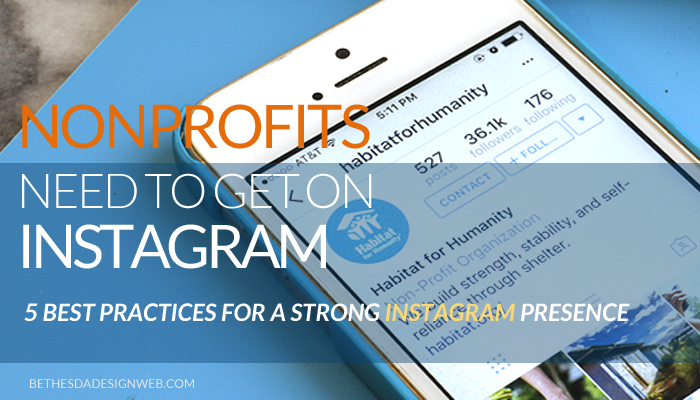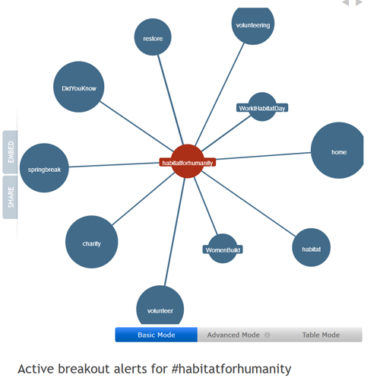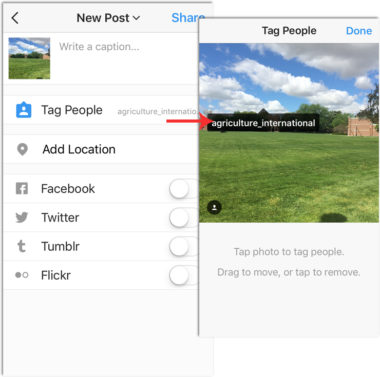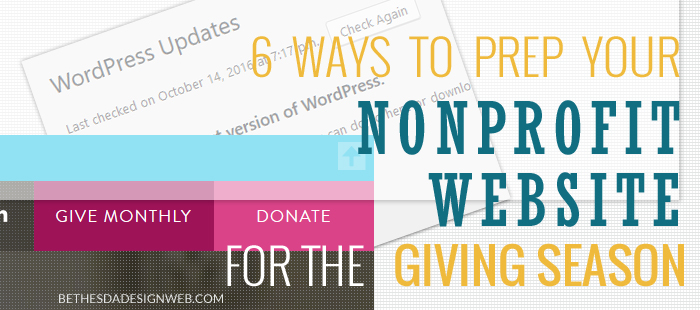Share your mission with pictures and tap into a huge pool of potential volunteers, donors, and supporters.
Sound like a nonprofit manager’s dream? It’s an opportunity that exists in Instagram, yet nonprofits are curiously slow to jump on this popular social networking photo-sharing app, according to M&R’s latest report this year. The nonprofit advocate’s annual Benchmarks Study found the current online landscape for nonprofits to be: for every 1,000 email subscribers, the average organization has 355 Facebook fans, 132 Twitter followers and a mere 19 Instagram followers.
“Nonprofits are missing out on a golden opportunity to invest more in branding on Instagram,” says Kimberlee Morrison, social media expert at Adweek.
The social media app is a potential visibility goldmine for nonprofits because of the way users engage: focused, commenting, and with a general atmosphere of support, well-being and positivity. It’s also a potent tool for nonprofits because it’s about photographs, and photographs are both easy to take with any smartphone and optimal for story-telling, a nonprofit’s chief fundraising tool. This value can only grow as the world’s love for pictures explodes: more pictures are now taken every two minutes than were taken during the entire nineteenth century, and 10% of all photos ever taken were in the last 12 months, according to the gurus at Fstoppers.com.

While nonprofits may be slow to jump on Instagram, the same cannot be said for everyone else. Since its launch in 2010, Instagram has grown to 400 million active users, and as of this year, according to Brandwatch.com, 30% of all internet users are now on Instagram. While it is true most Instagram users are 35 years and under, that’s still a large potential audience that nonprofits are missing.
HOW-TO: 5 Best Practices for Nonprofits on Instagram
Now that it’s clear a nonprofit needs to be on Instagram, here are the five best practices to follow for those nonprofits serious about tapping into this huge potential pool.
1. What to Post: Instagram is about good photography, and with smartphone cameras’ high quality, it’s easier than ever to take high quality shots. Take compelling images of people helped by the organization, volunteers in action, and imagery or quotes that depict your mission. Stay away from random office parties, board members at a table, and other non-curated shots. (There is a place for these, however, in a new snap-chat-like feature on IG released just this year called “stories”. More on that below.)
Make sure the image is brightly lit, in focus and roughly follows the rule of thirds. For images of individuals, close-up shots say more. Create a sense of a recognizable pattern, perhaps including a staff or mission quote every 5 posts or so. Create a consistent graphic template that matches your web presence using picmonkey.com or canva.

How to find hashtags that relate to your nonprofit using hashtagify.me
2. About Hashtags: Add at least 12 hashtags (though IG allows 30) in a comment that follows your caption. They can be a bank of carefully chosen tags you add with every post. Plug your nonprofit name or mission into hashtagify.me to find a dozen related hashtags.
Or use the search feature in Instagram: type in key words, and tap the tag tab to see what hashtags are offered.
3. Posting Schedule: The golden rule to early fast growth: Post at least daily, and once you post, hang around the app for 30 minutes watching for comments on your post.
If there are any, comment back and either add insight to their comment or just thank them for stopping by. And then click over to their page and reciprocate their kindness by commenting on their page’s latest post. At this point, if you are both relevant to each other, you may decide to follow each other.
On the other hand, if you receive no comments on your post, click on each of your hashtags and comment on a few of the top 9 posts featured in those hashtags. Those top 9 are there because Instagram thinks those accounts are very engaged and relevant to the hashtag, so to follow or be followed by one of them would likely be beneficial to your organization.

How to tag your image in Instagram to alert another related account of your post for yet another layer of visibility
4. Grow Followers: Try to grow your number of IG followers by:
— Follow other related nonprofit accounts, and hopefully they will follow you back.
— Like and comment on their posts; make your comment related to their activity, don’t use a comment on their post to plug your own. Hopefully they will follow you. (Don’t outright ask for a follow, it’s not professional Instagram etiquette.)
— To find related organizations on Instagram, visit your hashtags to find related IG accounts. Click on random posts and see what nonprofits are represented, and if your organization should follow them.
— Your follower number can also grow if you are visible in Instagram to possible interested visitors–one way to be very visible is to be featured by @instagram themselves – a difficult goal to achieve, but increase chances by following them and tagging your posts with @instagram and the names of other IG accounts who might be interested in your nonprofit.
5. Trigger Conversations: Increase engagement by asking questions in your captions, holding Instagram takeovers by allowing someone relevant to post for 3-5 days on your account (Example IG account that does this often: @rainforestalliance), tagging your own images with high-visibility organizations, and asking volunteers and interested visitors to post images about your nonprofit–but ask them to be sure to tag the image with your nonprofit’s IG name so you can see it. If they do so, click over to their page and thank them in a comment on their page. Then your comment and your nonprofit’s IG name will be visible to their followers, further expanding your field of visibility.
Bonus tip: Don’t forget Instagram Stories, the new Snapchat-clone to Instagram rolled out this year. Instagram Stories is the place for informal, less-curated content– images and videos–such as volunteers at work, mission locations, informal gatherings, board members, and more. Insta-stories (a growing nickname) are another easy visibility option to send alerts that your organization exists and great deeds are going on.
The final take-away? Nonprofits need to be on Instagram; it’s too easy and too beneficial an opportunity to pass up, and hopefully this five-point blueprint will help you take advantage.


